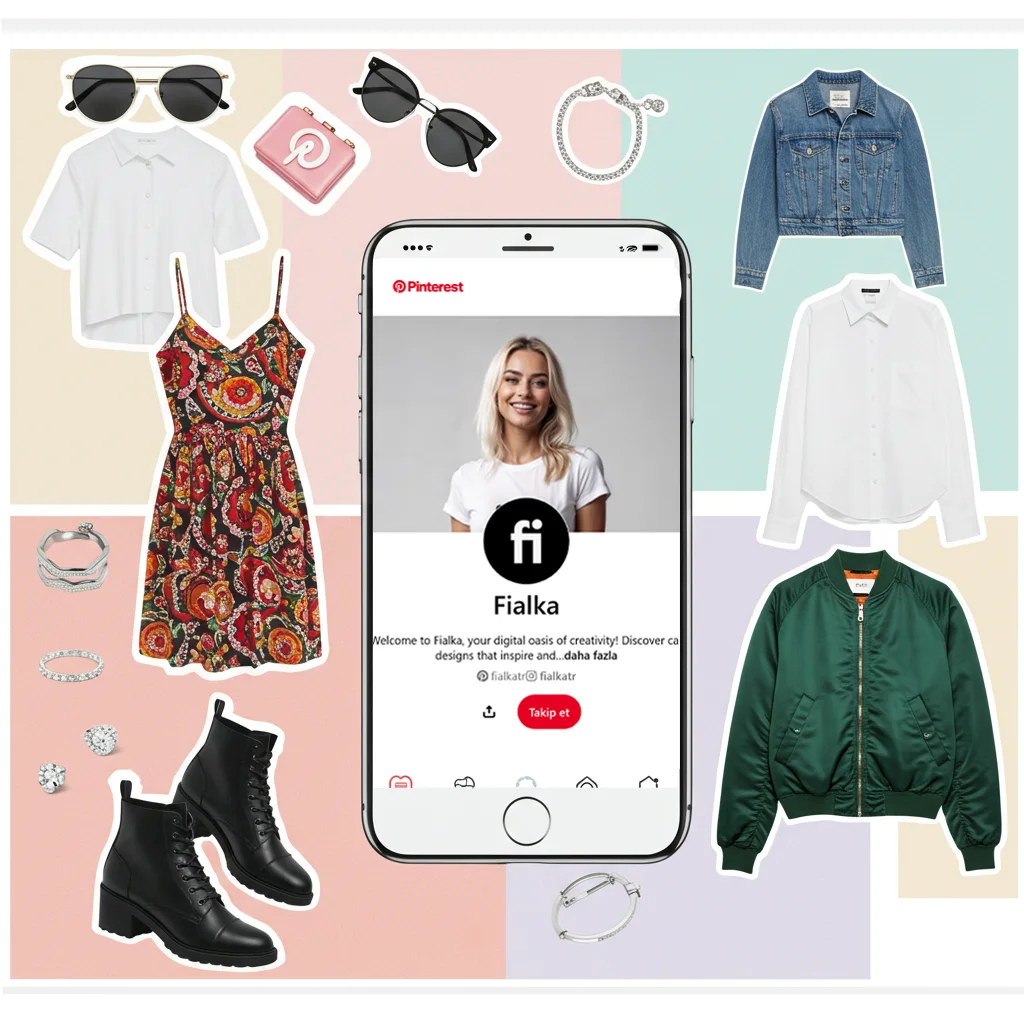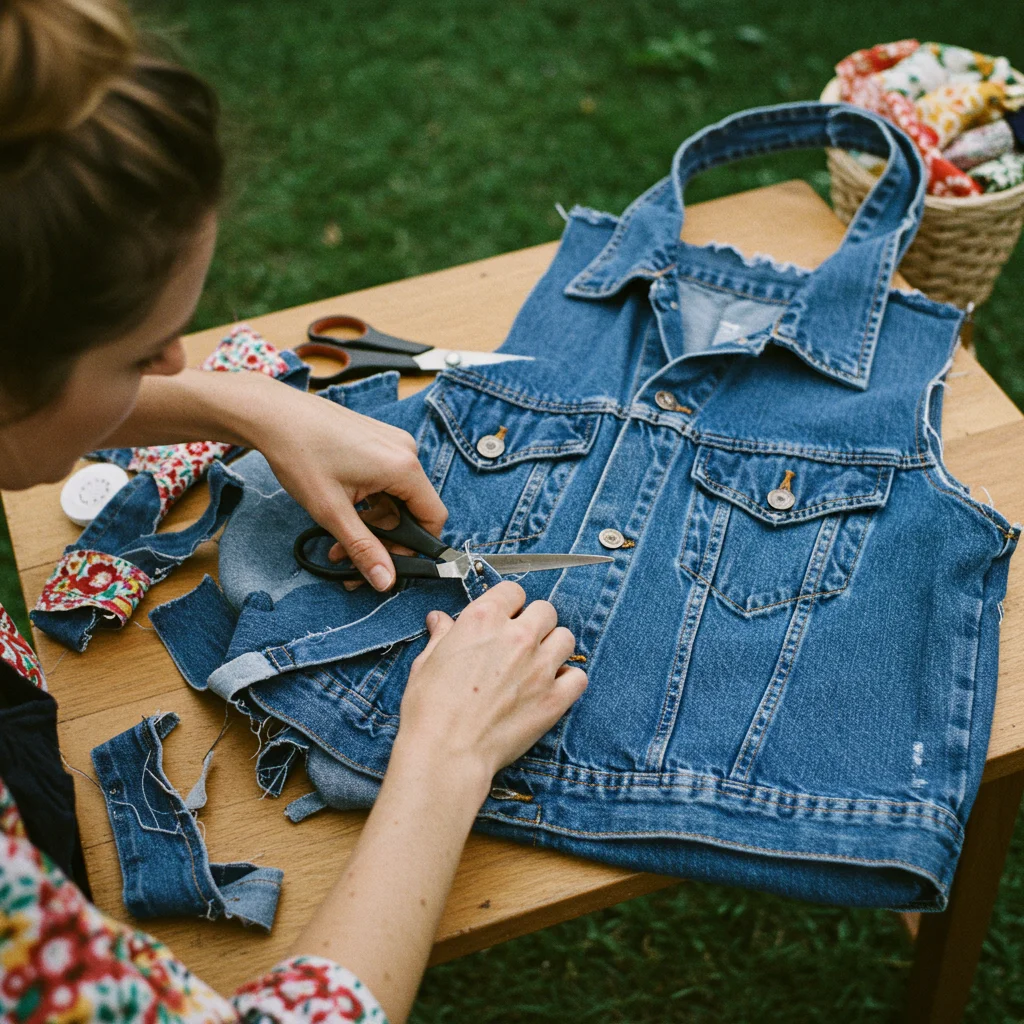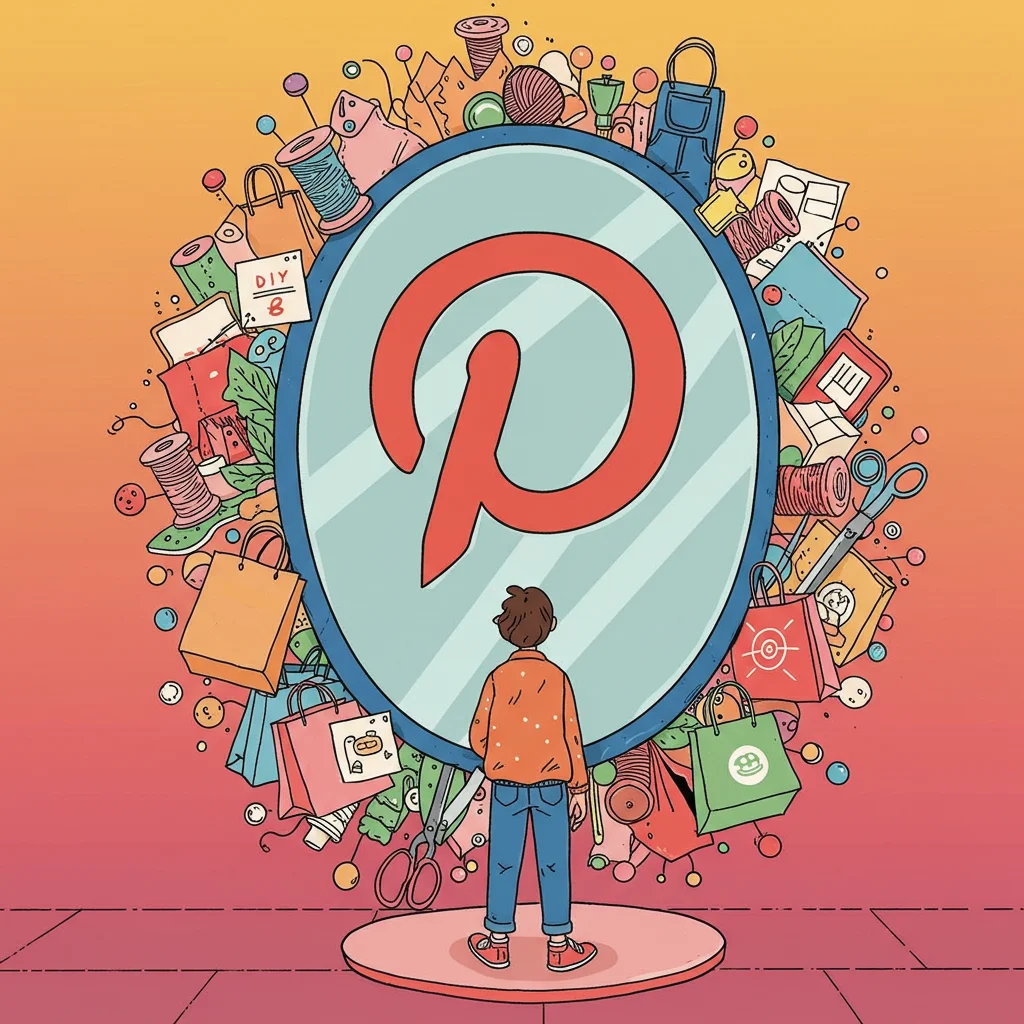Table of Contents
Introduction

In the age of digital inspiration, platforms like Pinterest have transcended their role as mere idea repositories to become pivotal tools in shaping personal style. With over 482 million monthly active users (1)1, Pinterest’s visual-centric interface has redefined how people discover, curate, and execute their daily outfits. This article explores the platform’s influence on fashion choices, shopping habits, and sustainable practices.
Pinterest as a 24/7 Style Inspiration Hub

Pinterest’s algorithm thrives on personalized recommendations, serving users endless scrolls of outfit ideas tailored to their preferences. From “coastal grandma” aesthetics to “dark academia” vibes, the platform helps individuals discover niche trends long before they hit mainstream fashion. Users create mood boards for specific occasions—workwear, weddings, or casual weekends—turning abstract ideas into actionable style guides.
The Virtual Personal Stylist

Gone are the days of flipping through glossy magazines. Pinterest’s “Style Ideas” feature and “Try On” AR filters (2)2 allow users to visualize how trends might look on their body type or skin tone. By saving pins to secret boards, people privately experiment with new looks, building confidence before stepping out in real life. For many, this digital experimentation reduces the anxiety of fashion risks.
Driving Purchases Through Aspirational Content

Pinterest isn’t just about inspiration—it’s a commercial powerhouse. Over 80% of weekly Pinners have discovered a new brand or product on the platform (3)3. Outfit pins often link directly to retailers, streamlining the journey from admiration to acquisition. Brands leverage this by partnering with influencers to create shoppable content, turning Pinterest into a silent salesperson for the fashion industry.
Fostering Inclusive Fashion Communities

Pinterest’s global reach nurtures micro-communities around body positivity, adaptive clothing, and cultural fashion. Hashtags like #CurvyStyle or #ModestFashion connect users with shared values, democratizing style beyond traditional industry gatekeepers. This inclusivity helps marginalized groups feel seen and offers practical solutions for everyday dressing challenges.
Sustainability and Thrifting Trends

As consumers prioritize eco-conscious choices, Pinterest fuels the rise of thrift flips, capsule wardrobes, and DIY upcycling tutorials. Searches for “sustainable outfits” grew by 200% in 2023 (4)4, reflecting a shift toward mindful consumption. The platform’s emphasis on timeless aesthetics over fast fashion encourages users to reinvent existing pieces rather than chase fleeting trends.
Conclusion

Pinterest’s role in daily dressing extends far beyond casual browsing—it’s a dynamic force shaping how we define, refine, and reinvent personal style. By blending inspiration with practicality, the platform empowers users to become their own stylists, shoppers, and sustainability advocates.












Monetize your audience with our high-converting offers—apply today! https://shorturl.fm/zPazR
Join our affiliate community and earn more—register now! https://shorturl.fm/dNXnk
Drive sales, earn big—enroll in our affiliate program! https://shorturl.fm/uKp4o
Join our affiliate program today and start earning up to 30% commission—sign up now! https://shorturl.fm/AMeAQ
Get paid for every referral—enroll in our affiliate program! https://shorturl.fm/meESI
Promote our brand and watch your income grow—join today! https://shorturl.fm/CWeJ7
Become our partner and turn clicks into cash—join the affiliate program today! https://shorturl.fm/MJnRS
Become our partner and turn referrals into revenue—join now! https://shorturl.fm/yfXsI
Join our affiliate family and watch your profits soar—sign up today! https://shorturl.fm/XmTkt
Earn recurring commissions with each referral—enroll today! https://shorturl.fm/Jx64J
Tap into unlimited earning potential—become our affiliate partner! https://shorturl.fm/u5cBK
Tap into unlimited earnings—sign up for our affiliate program! https://shorturl.fm/PuCpH
Promote our products and earn real money—apply today! https://shorturl.fm/DsdFi
Share your link and rake in rewards—join our affiliate team! https://shorturl.fm/BpCuU
Earn up to 40% commission per sale—join our affiliate program now! https://shorturl.fm/Pqa7J
Get started instantly—earn on every referral you make! https://shorturl.fm/qtNqc
Share your unique link and cash in—join now! https://shorturl.fm/dSruV
Promote our products—get paid for every sale you generate! https://shorturl.fm/UhGrQ
Join forces with us and profit from every click! https://shorturl.fm/0osRB
Boost your profits with our affiliate program—apply today! https://shorturl.fm/Qg9hY
Become our partner and turn referrals into revenue—join now! https://shorturl.fm/fsusa
Get paid for every click—join our affiliate network now! https://shorturl.fm/xjblH
Partner with us and enjoy recurring commission payouts! https://shorturl.fm/IRNFF
Drive sales, collect commissions—join our affiliate team! https://shorturl.fm/DGYv7
Join our affiliate community and earn more—register now! https://shorturl.fm/FACOI
Promote our brand and get paid—enroll in our affiliate program! https://shorturl.fm/SKzZ1
Join our affiliate program and watch your earnings skyrocket—sign up now! https://shorturl.fm/ylbVe
Join our affiliate program and start earning commissions today—sign up now! https://shorturl.fm/ZEPtw
Earn big by sharing our offers—become an affiliate today! https://shorturl.fm/sHJRu
Join our affiliate program and watch your earnings skyrocket—sign up now! https://shorturl.fm/rKSYe
Promote our brand and get paid—enroll in our affiliate program! https://shorturl.fm/4XfhX
Join our affiliate community and start earning instantly! https://shorturl.fm/RMTMn
Monetize your audience—become an affiliate partner now! https://shorturl.fm/ME5Nq
Tap into unlimited earning potential—become our affiliate partner! https://shorturl.fm/yQcqp
Start sharing, start earning—become our affiliate today! https://shorturl.fm/xq1cV
Partner with us for high-paying affiliate deals—join now! https://shorturl.fm/Dbm5b
Start earning every time someone clicks—join now! https://shorturl.fm/2Hkc5
Unlock exclusive affiliate perks—register now! https://shorturl.fm/1BcV7
Unlock exclusive affiliate perks—register now! https://shorturl.fm/ycD4e
Share our products and watch your earnings grow—join our affiliate program! https://shorturl.fm/yZvkE
Sign up for our affiliate program and watch your earnings grow! https://shorturl.fm/HZ5Ms
https://shorturl.fm/XB163
https://shorturl.fm/Z60tR
https://shorturl.fm/M0wu5
https://shorturl.fm/dZzil
https://shorturl.fm/BuTG9
https://shorturl.fm/JaQbg
https://shorturl.fm/6n3FO
https://shorturl.fm/wBkrc
https://shorturl.fm/2eilY
https://shorturl.fm/etGNu
https://shorturl.fm/9p2tR
https://shorturl.fm/bSl33
https://shorturl.fm/KtYAV
https://shorturl.fm/WXaDN
https://shorturl.fm/Zhaff
https://shorturl.fm/f6Tt8
https://shorturl.fm/JxEzb
https://shorturl.fm/xrnE2
https://shorturl.fm/dn3oy
https://shorturl.fm/02cWM
https://shorturl.fm/qDyOE
https://shorturl.fm/QqXE6
https://shorturl.fm/ltJJS
https://shorturl.fm/goDYb
https://shorturl.fm/M82OV
https://shorturl.fm/hNHNY
https://shorturl.fm/KPTAA
https://shorturl.fm/Sz8Iw
https://shorturl.fm/DI4w9
https://shorturl.fm/bSzn8
https://shorturl.fm/IL4a3
https://shorturl.fm/I3mxq
https://shorturl.fm/rBetw
https://shorturl.fm/x6GuE
https://shorturl.fm/HZSLK
https://shorturl.fm/slNWD
https://shorturl.fm/s1BDm
https://shorturl.fm/Zs9G6
https://shorturl.fm/3bVYe
https://shorturl.fm/3zonM
https://shorturl.fm/kyE7C
https://shorturl.fm/YRp11
https://shorturl.fm/sD0Uj
https://shorturl.fm/kt23w
https://shorturl.fm/sE3rs
https://shorturl.fm/qvIXe
https://shorturl.fm/D9tDQ
https://shorturl.fm/HfmZn
https://shorturl.fm/5CIso
https://shorturl.fm/ogP0b
https://shorturl.fm/QUF6A
https://shorturl.fm/s6MKQ
cxdis4
https://shorturl.fm/GtUlU
https://shorturl.fm/zTKq8
https://shorturl.fm/UKeof
https://shorturl.fm/lWrk2
https://shorturl.fm/NaEZ8
https://shorturl.fm/XF0nM
https://shorturl.fm/MJKAB